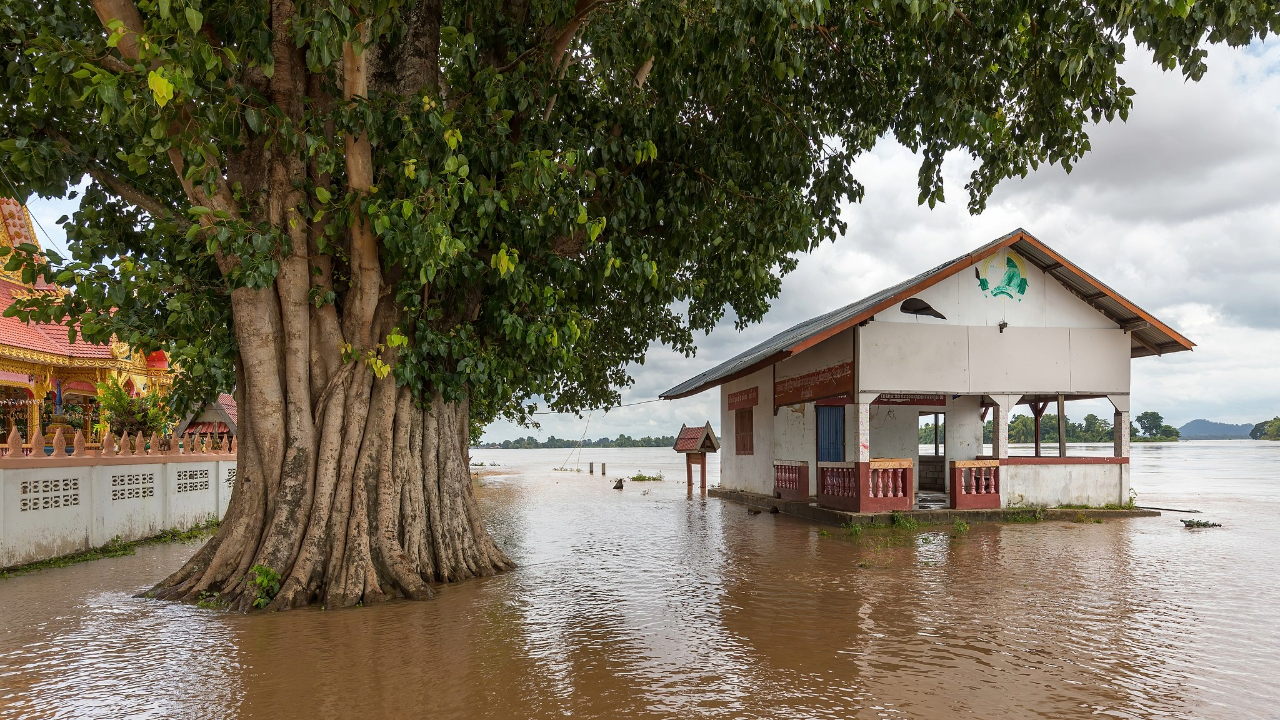Mars More Active and Complex than Expected
On the whole, Mars can seem rather boring. It is covered with basalt, the most basic type of rock, and generally appears to lack geologic diversity. It does not shake or rumble much. And then there's that red dust everywhere.
But a closer look reveals pockets of rocks that rival the complexity of our own planet.
The finding means Mars is more active beneath the surface than scientists realized.
"When you look at the geology in the right spots, there is as much diversity in the rocks as you see on Earth," said Philip Christensen, an Arizona State University professor and a top scientist on three different ongoing Mars missions.
The results of this and six other studies are detailed this week by the journal Nature. The studies draw from data collected by NASA's orbiting Mars Global Surveyor and Odyssey spacecraft, as well as the two rovers on the ground.
Collectively, the findings show that there is still much to learn about Mars. Specifically, it is not yet clear how much of Mars was ever covered with water, nor how deep any lakes or seas might have been. Part of the mystery is locked in the ubiquitous dust, which retains secrets even after close examination by the rovers.
The geologic history of Mars is a story that remains largely unwritten.
Breaking space news, the latest updates on rocket launches, skywatching events and more!
Diverse Mars
Researchers knew that Mars was geologically active early in its history. But its volcanoes seem to have mostly shut down, though the timing is unclear and recent evidence suggests activity may not be over yet. Yet unlike Earth, modern Mars does not have anywhere near the amount of tectonic movement that creates earthquakes and keeps volcanoes active here.
In large scale surveys, Mars reflects this simplicity in a consistency of minerals and rock types.
But close inspection reveals a host of rock types, from primitive volcanic material like olivine-rich basalts to highly processed silica-rich rocks such as granite, the study found. The diversity implies that the surface rocks have been reconstituted many times over an extended period of time, perhaps into the present era.
Christensen explained: "You melt the mantle and you get olivine basalts; you melt them again and you get basalt; you melt that and you make andesite; you melt that and you make dacite; you melt that and you make granite."
Mars is "a very complex world underneath that veneer of basalt," Christensen said.
Mars is not like Earth, however.
"On Earth, we have mountain ranges made of granite, on Mars we have so far only found a couple of globs," Christensen said.
The work builds on several recent findings that Mars was and is geologically active.
Pictures last year revealed that Martian volcanoes might still be rumbling . Another study found marsquakes might be more common than sketchy data had previously revealed. And pictures earlier this year hinted that glaciers and volcanic flows occurred recently.
Other surprises
Other findings reported in the July 7 issue of Nature show that, despite the rovers' uncovering signs of ancient water on Mars and the greater understanding of Martian chemistry and geology provided by various missions, the red planet continues to harbor many secrets.
- Predictions of Mars' average atmospheric density, made prior to the twin rover mission, were 8 percent too high, causing their parachutes to open later than planned as they descended to the surface early last year.
- Satellite and telescope surveys provided less than accurate assessments of the geology to expect, according to an analysis led by Caltech researcher Matt Golombek. The Spirit rover, for example, did not find strong evidence for extensive amounts of water in Gusev Crater, as geologists anticipated.
- Dust on Mars is made of similar material on opposite sides of the planet. That means wind must carry dust around the globe. The dust contains olivine, a mineral that breaks down quickly when wet, so the dust has not experienced a thorough soaking, according to a team led by Albert Yen of Caltech.
- At the Opportunity rover's Meridiani site, wind-related features reveal that some sand stays put better than current theories can explain, say Cornell University scientist Robert Sullivan and colleagues.
Lots to learn
In a separate paper in the journal, David Catling of the University of Washington comments on the new results. Catling says the largest gap in our understanding of Mars is caused by the absence of detailed data on mineral chemistry.
Dust that coats the planet contains minerals of unknown origin, Catling said.
NASA's Phoenix mission, which could launch in 2007, would contain a powerful microscope to sift out answers, he said.
Finally, Catling said NASA's Mars Science Laboratory, slated to launch by 2011, could reveal how much of the salty material on Mars -- found by the rovers -- was the result of evaporated seas, versus how much came from Ice Age runoff or volcanic processes.
- The Best of the Mars Rover Images
- Mars Rovers: Special Report
- Dust Devils on Mars Electrified, Study Suggest
- The 10 Best Mars Images Ever
Join our Space Forums to keep talking space on the latest missions, night sky and more! And if you have a news tip, correction or comment, let us know at: community@space.com.

Rob has been producing internet content since the mid-1990s. He was a writer, editor and Director of Site Operations at Space.com starting in 1999. He served as Managing Editor of LiveScience since its launch in 2004. He then oversaw news operations for the Space.com's then-parent company TechMediaNetwork's growing suite of technology, science and business news sites. Prior to joining the company, Rob was an editor at The Star-Ledger in New Jersey. He has a journalism degree from Humboldt State University in California, is an author and also writes for Medium.
